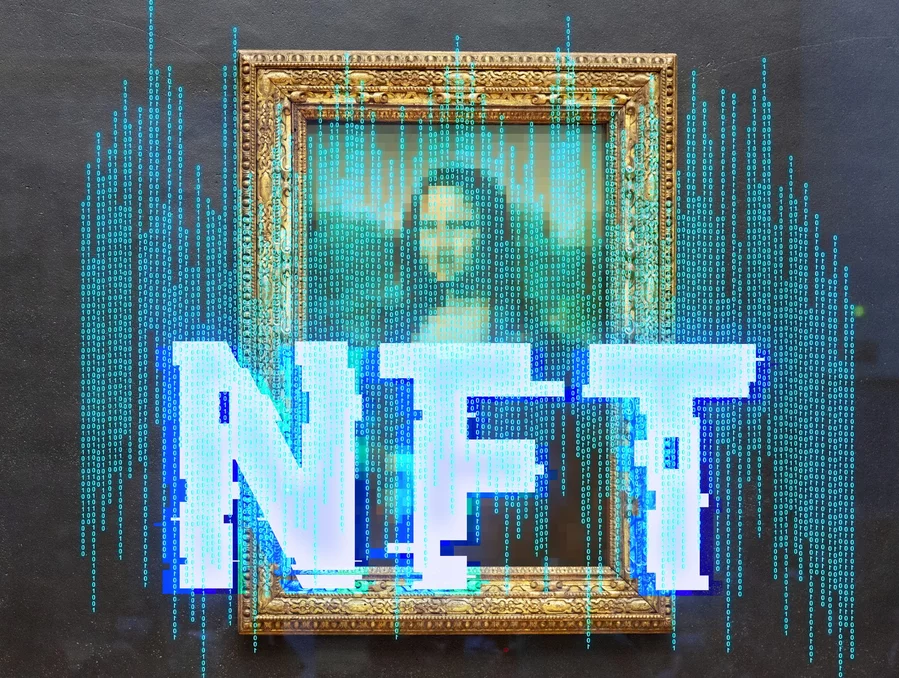What is an NFT?
NFT stands for Non-Fungible Token, a unique digital asset that represents ownership or proof of authenticity of a specific item or piece of content, usually stored on a blockchain. Unlike cryptocurrencies like Bitcoin or Ethereum, which are fungible and can be exchanged on a one-to-one basis, NFTs are unique or part of a limited series, making each one distinct and not directly interchangeable with another.
How Does an NFT Work?
NFTs are primarily built using blockchain technology, most commonly on the Ethereum blockchain, although other blockchains such as Binance Smart Chain and Flow also support NFTs. Here’s a simplified breakdown of how NFTs work:
Creation: Digital content such as art, music, videos, or even tweets can be turned into an NFT through a process called minting. During minting, the content is recorded on the blockchain as a unique token.
Ownership: The NFT’s blockchain entry includes metadata about the digital asset and the ownership details. When someone buys an NFT, the ownership is transferred to their digital wallet, and this transaction is recorded on the blockchain.
Immutability and Security: The blockchain ensures that the ownership and authenticity of the NFT can be verified and cannot be altered or counterfeited. This immutability and security are core advantages of NFTs.
Smart Contracts: NFTs often include smart contracts, which are self-executing contracts with the terms of the agreement directly written into code. These can include terms for royalties, ensuring that creators earn a percentage of sales when the NFT is resold.
Why Buy an NFT?
People buy NFTs for various reasons. Many collectors appreciate the unique and collectible nature of NFTs, similar to physical collectibles like stamps or baseball cards. NFTs offer a way to own and display digital art, music, or other forms of content in a new and innovative way. Some buyers purchase NFTs as an investment, hoping that their value will increase over time. High-profile sales, such as digital art by Beeple, have fetched millions, attracting investors looking for high returns. Additionally, buying NFTs directly supports artists and creators, often giving them more profit and control compared to traditional methods of selling their work. For some, owning high-value or unique NFTs can also be seen as a status symbol in the digital world, much like owning luxury goods in the physical world.
How to Buy an NFT
To buy an NFT, you first need a digital wallet that supports NFTs, such as MetaMask, Trust Wallet, or Coinbase Wallet. Since NFTs are usually bought with cryptocurrencies, you need to purchase some Ethereum (ETH), the most commonly used cryptocurrency for NFT transactions, which can be bought from exchanges like Coinbase, Binance, or Kraken. Once your wallet is set up and funded, you can choose an NFT marketplace to browse and purchase NFTs. Popular marketplaces include OpenSea, Rarible, Foundation, and NBA Top Shot for sports-related NFTs. After finding an NFT you want to buy, you can purchase it directly or place a bid if it’s an auction. After purchasing, the NFT will be transferred to your digital wallet, with the transaction details, including ownership, recorded on the blockchain. Finally, you can view and manage your NFTs in your digital wallet, with some wallets offering integrations with marketplaces and display features, allowing you to showcase your collection.
NFTs represent a revolutionary development in how digital content is owned, traded, and valued. They provide a new avenue for artists and creators to monetize their work, offer collectors and investors a novel asset class, and contribute to the evolving digital landscape. Understanding the basics of NFTs, their appeal, and the process of buying them can help you navigate this burgeoning market with confidence. Whether you’re an investor, a digital art aficionado, or someone exploring new digital trends, NFTs present a fascinating and rewarding opportunity to explore and collect in the digital world.

